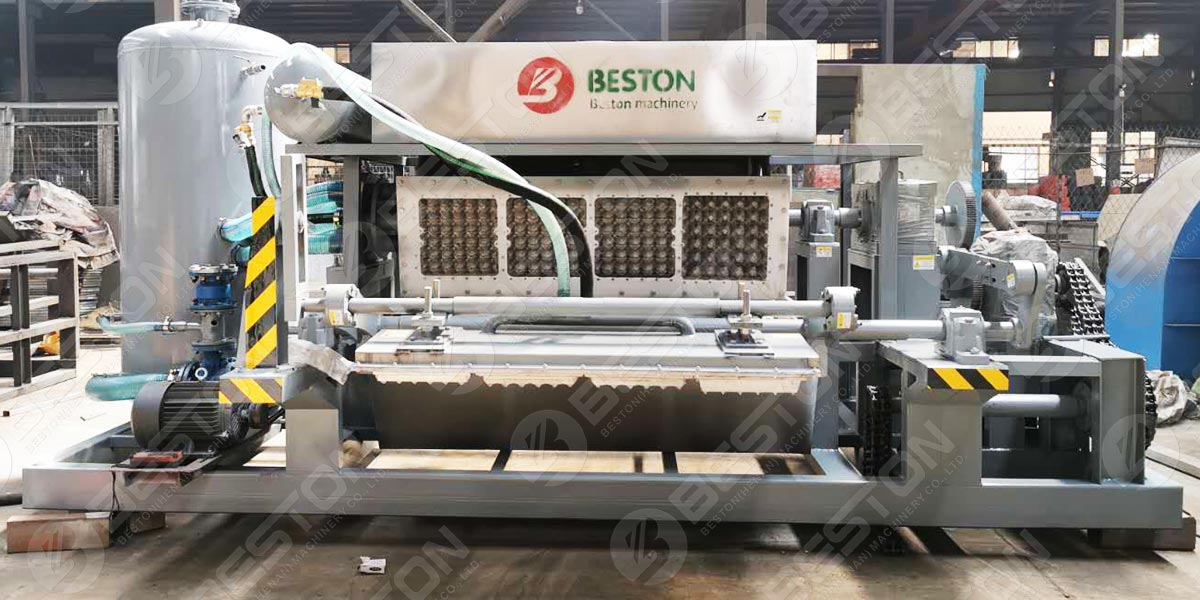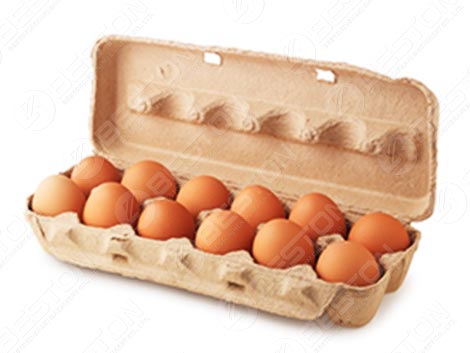In the dynamic world of egg production, innovation takes center stage with the advent of the egg tray making machine. This remarkable piece of technology has transformed the way we produce and package eggs, making it not only efficient but also environmentally responsible. In this comprehensive exploration, we will delve into the intricacies of the egg tray making machine, its key components, and the significant impact it has on the poultry industry.
The Core Concept of the Egg Tray Making Machine
Before we delve into the technical aspects, let’s understand the fundamental concept behind the paper egg tray making machine. At its core, this machine is designed to produce egg trays, also known as egg cartons or egg boxes, through a process known as pulp molding. Pulp molding involves the use of a pulp mixture, typically made from recycled paper or cardboard, to create molded trays that can hold eggs securely.
The egg tray making machine takes this concept and elevates it with precision engineering, resulting in a more efficient, sustainable, and cost-effective solution for egg packaging.

The Components of an Egg Tray Making Machine
To appreciate the efficiency and functionality of the egg tray making machine, let’s examine its key components:
- Pulping System: This is where the process begins. Recycled paper or cardboard is mixed with water and broken down into pulp. The pulp is then refined to create a smooth and uniform mixture.
- Molding System: The pulp mixture is poured into molds that have the shape and dimensions of egg trays. The molds can vary in size to produce different tray configurations.
- Drying System: Once molded, the trays are transferred to a drying system. Hot air is used to remove moisture from the trays, leaving them dry and ready for use.
- Pressing System (Optional): In some machines, a pressing system can be incorporated to remove excess water from the trays before they enter the drying phase.
- Stacking and Packing System: The dried trays are stacked and packed into bundles, ready for transportation to egg producers.
- Control and Monitoring System: Modern industrial packaging machine often feature advanced control and monitoring systems that ensure precise control of the pulp consistency, mold filling, and drying process.
The Operational Process of an Egg Tray Making Machine
Understanding how the egg tray making machine operates is crucial to appreciate its efficiency:
- Pulping: Recycled paper or cardboard is mixed with water and pulped to create a consistent mixture.
- Molding: The pulp mixture is poured into molds, and excess water is drained. The molds are then removed, leaving behind molded trays.
- Drying: The trays are transferred to a drying system where hot air is used to remove moisture, leaving the trays dry and sturdy.
- Quality Inspection: Trays are inspected for quality, ensuring that they meet the required standards for strength and consistency.
- Stacking and Packing: The dried trays are stacked and packed into bundles, making them ready for shipment to egg producers.

Advantages of the Egg Tray Making Machine
The egg tray making machine offers several compelling advantages:
- Sustainability: It utilizes recycled paper or cardboard, contributing to resource conservation and reducing waste.
- Efficiency: The automation and precision of the process result in consistent and high-quality egg trays.
- Cost-Effective: Using recycled materials and efficient production processes makes it a cost-effective solution for egg packaging.
- Customization: The pulp molding machinery can produce a variety of tray sizes and configurations to suit different egg types and packaging needs.
- Environmentally Friendly: Pulp molding is an eco-friendly process that generates minimal waste and emissions.
Applications of Egg Trays Produced by the Egg Tray Making Machine
Egg trays are versatile and serve a variety of purposes:
- Egg Packaging: The primary use is for packaging eggs, providing a secure and protective environment during transportation and storage.
- Fruit and Produce Packaging: Egg trays can also be used for packaging delicate fruits and vegetables, ensuring they reach consumers in optimal condition.
- Cup and Glass Packaging: Egg trays can be repurposed for packaging fragile items like cups, glasses, and ceramics.
- Seedling Trays: They are used in horticulture for starting and nurturing seedlings before transplanting them to the garden.
The Future of Egg Packaging
As the world moves toward more sustainable practices, the egg tray making machine stands as a testament to innovation in the poultry industry. Its efficiency, cost-effectiveness, and eco-friendliness have reshaped the way we think about egg packaging. With a focus on recycling, resource conservation, and environmental responsibility, the egg tray making machine is set to play a pivotal role in the future of egg packaging, where sustainability meets efficiency. See more from Beston Group.